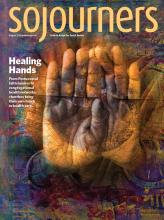ON MARCH 1, 1954, at 6:45 a.m., the U.S. government detonated a 15-megaton hydrogen bomb in the Bikini Atoll. Within a few hours, the ash-like radioactive fallout from the “Bravo” test explosion began to descend on the nearby inhabited atolls of Rongelap and Rongerik. An Air Force witness said the fallout resembled “a snowstorm in the middle of the Pacific.”
A two-inch-deep layer of radioactive dust accumulated on Rongelap, contaminating its food supply and drinking water. Children playing in the powder experienced skin eruptions on their arms and faces. By the end of the day, the residents of Rongelap had begun to exhibit the symptoms of acute radiation exposure: burns, severe vomiting, diarrhea, and hair loss.
Read the Full Article

Already a subscriber? Login
